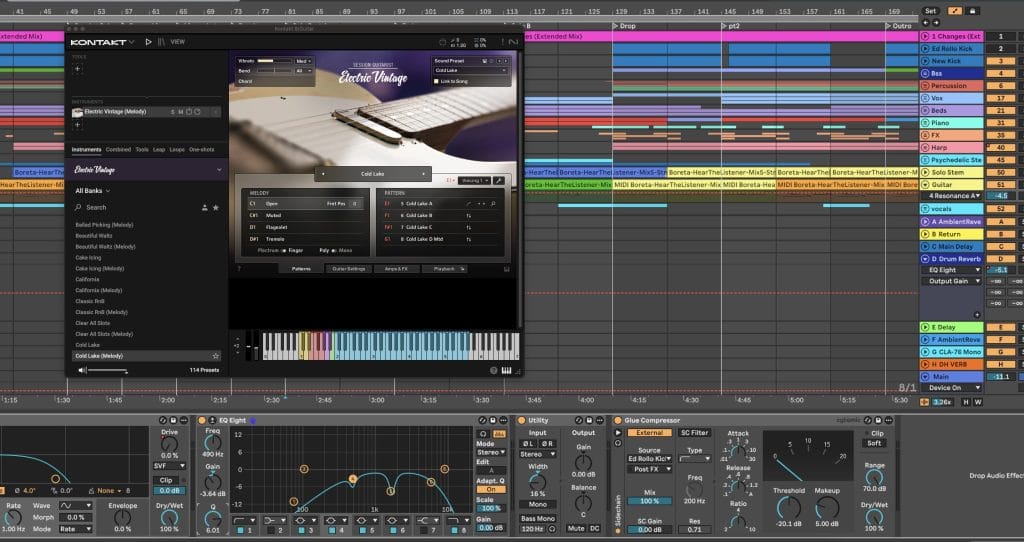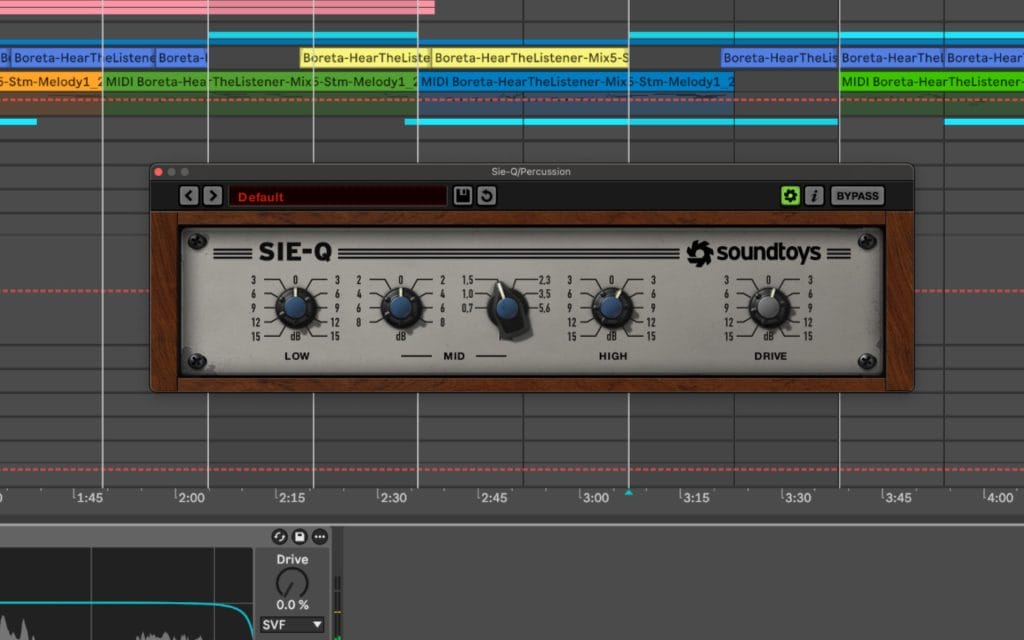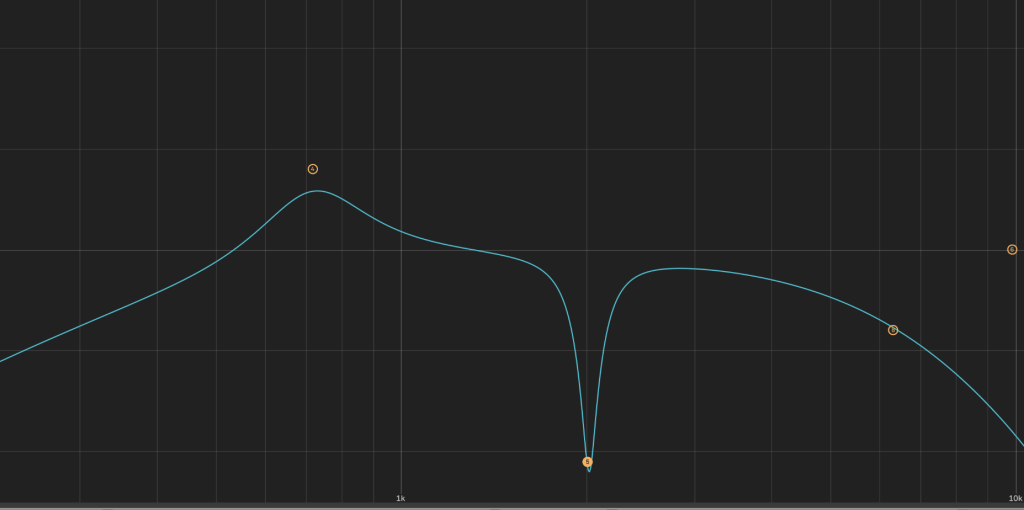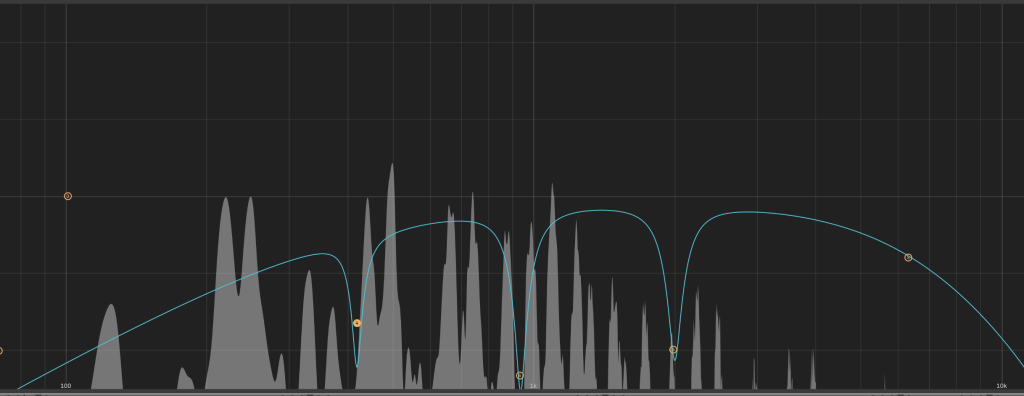Table of Contents
Every mix contains resonances.
These are frequencies that poke out too much and can make a sound harsh or distracting. Many producers respond by applying a narrow EQ notch to eliminate the issue. This approach looks precise, but the result often sounds worse than the original problem. Instruments lose fullness, vocals lose presence, and the entire mix feels lifeless.
A more effective method is to tame resonances with restraint. Using wider, gentler cuts smooths the problem areas while keeping the character of the sound intact. For intermediate and advanced producers, this approach leads to mixes that feel controlled yet still musical.
Why Deep Cuts Can Damage a Mix
Surgical EQ notches have a role in production, but heavy use can strip away harmonics that are essential to a sound’s tone. Cutting a large amount of energy at one frequency does not only remove the harshness. It also removes the surrounding detail that gives the sound its character. A vocal with a deep cut at 3 kHz often sounds thin and weak. A guitar treated with multiple notches can lose its presence in the arrangement.
Resonances also behave differently in context. A frequency that feels abrasive when soloed may add clarity when heard with the full mix. For example, a nasal tone around 800 Hz in a guitar can feel distracting in isolation, but inside a dense arrangement it may help the part remain audible. The challenge is not in detecting the resonance but in making an adjustment that serves the entire track.
How to Recognize Resonances Worth Fixing
Resonances appear naturally in almost every instrument. The key is to decide which ones require control and which ones add character. Listening carefully is the first step. If a frequency consistently feels unpleasant or distracting, it is worth addressing.
Sweeping a narrow EQ band across a track can highlight resonant peaks. Spectrum analyzers can confirm what your ears detect, but they should not lead the decision. If you see a spike that does not sound problematic in the mix, leave it alone. For a clear explanation of EQ fundamentals, the guide from iZotope on the principles of equalization is a solid resource that builds the foundation for decisions like these.
Gentle, Wide Cuts Keep the Mix Musical
The most transparent way to control resonances is through subtle, wide cuts. A 2 to 3 dB cut across a broad range is often more effective than a sharp 10 or 12 dB notch. This method keeps the energy of the sound intact while softening the resonance.
For example, a vocal with a piercing resonance at 2.8 kHz often improves with a cut that spans 2.5 to 3.5 kHz. The vocal loses the harsh edge but keeps its clarity. Cymbals or hi-hats that feel brittle when boosted to “fill the spectrum” benefit from a gentle high shelf cut. The shimmer remains, but the sound avoids fatigue.
Resonances Across Common Instruments

Certain ranges tend to produce resonances more frequently than others. Vocals often develop harshness between 2 and 5 kHz and sibilance between 6 and 8 kHz. Guitars can sound honky around 800 Hz or sharp between 2 and 3 kHz. Snares often ring around 200 Hz and feel overly sharp in the 5 to 7 kHz range. Cymbals commonly spike above 7 kHz. Synths vary widely, but resonances often occur around filter cutoff points.
These ranges are not rules, but they give you starting points. As your ears develop, you will begin to identify resonances quickly without searching for them.
Workflow Habits That Keep Cuts Under Control

Maintaining balance in resonance EQ comes down to discipline. Begin with small adjustments. If a problem does not improve with a 2 to 3 dB cut, reassess whether the issue is resonance or something related to arrangement, gain staging, or sound choice.
Dynamic EQ is especially effective for managing resonances. A dynamic band only reduces the frequency when the problem occurs, keeping the natural tone intact the rest of the time.
Always level match after EQ so you are not misled by volume differences. Finally, judge changes in the full mix. Resonances nearly always feel more pronounced in solo than they do in context.
When Surgical Notches Are the Right Choice

Some situations require precise notches. Power line hum, microphone pops, and feedback spikes are examples where surgical EQ is appropriate. These are corrective fixes rather than musical shaping. They are useful but should not define your EQ approach.
Mistakes to Avoid When EQing Resonances
Many mistakes come from overreacting to resonances. Cutting every peak in a vocal track can leave it lifeless. Flattening the display of a spectrum analyzer can erase the qualities that make an instrument unique. Mixing through ear fatigue often leads to excessive cutting in the highs, leaving the mix dull when heard later. Making resonance decisions in solo without considering the arrangement usually creates the same issue.
Developing the habit of restraint and always returning to the context of the mix helps avoid these pitfalls.
Conclusion: Smooth, Not Hollow
Taming resonances is about control that feels musical. Gentle EQ cuts reduce harshness without stripping away the energy of the sound. Extreme notches may look precise, but they often remove the details that give a mix life.
Trust your ears first, use visual tools as a reference, and make changes in the context of the entire track. This method leads to mixes that sound smooth, natural, and engaging across all playback systems.
FAQ: Tame Resonances in Mixing
What does taming resonance mean?
It means reducing a distracting frequency with subtle, broad EQ moves rather than removing it completely with narrow notches.
Should I always cut resonances?
No. Many resonances contribute to an instrument’s tone. Only cut those that consistently cause problems in the full mix.
Is dynamic EQ useful for resonance control?
Yes. Dynamic EQ reduces resonances only when they occur, which keeps the tone intact at all other times.
How do I avoid hollow-sounding EQ?
Start with small, wide cuts and always re-check changes in the context of the mix. Avoid stacking too many narrow notches.
The post Tame Resonances in Mixing: Why Gentle EQ Cuts Sound More Natural appeared first on Magnetic Magazine.






